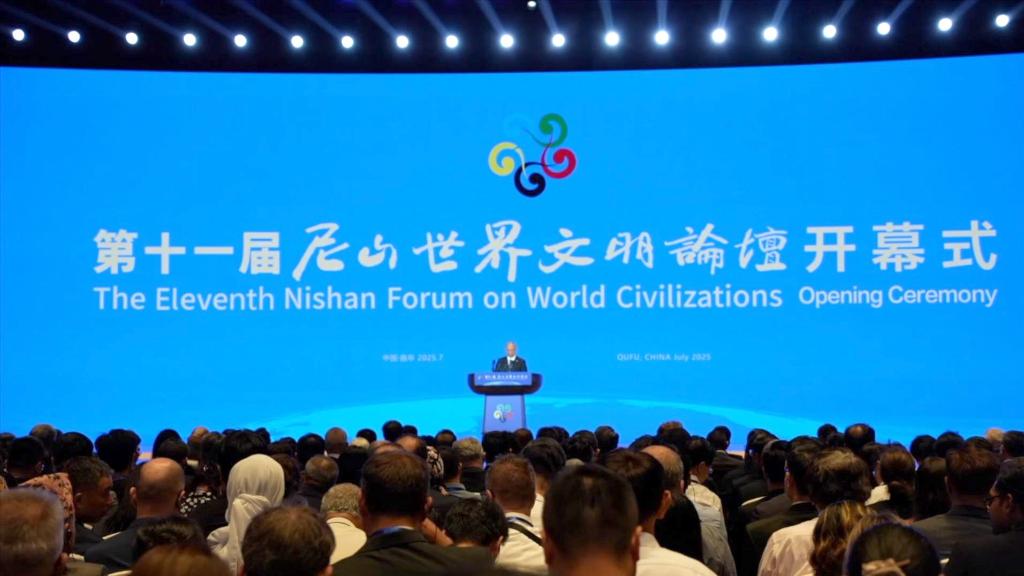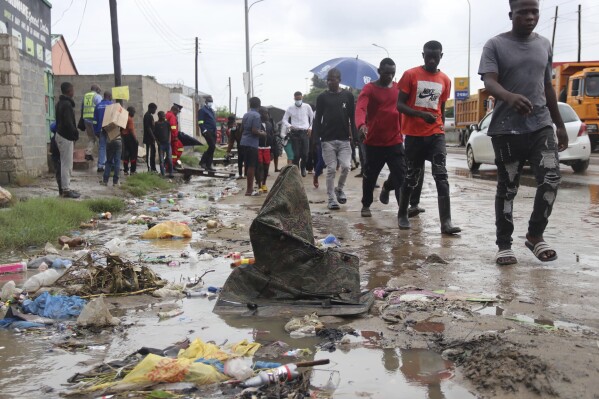Xinhua Institute, a national high-level think tank of Xinhua News Agency, on Friday released a report on China’s poverty reduction experience.
The report, titled “Striving for a Better Life for the People: China’s Practical and Theoretical Innovations in Consolidating and Expanding Poverty Alleviation Achievement,” was officially launched in Chinese and English versions concurrently during the Global Civilizations Dialogue Ministerial Meeting held in Beijing from Thursday to Friday.
Consisting of five chapters, the research report introduces China’s new missions after its eradication of absolute poverty, as well as its theoretical and practical innovations in poverty reduction and international cooperation in this field.
The report noted that China has made continuous efforts to consolidate and expand its poverty alleviation achievements in a five-year transitional period after the country, in February 2021, declared a complete victory in eradicating absolute poverty.
The year 2025 marks the final year of the transitional period. Throughout this period, China has firmly upheld the bottom line of preventing any large-scale relapse into poverty.
This has been manifested in employment and income. For instance, as of the end of 2024, 33.05 million individuals from previously impoverished households were engaged in employment, a figure that has remained steadily above 30 million for four consecutive years, according to the report.
Last year, the per capita disposable income of rural residents in counties that had shaken off poverty reached 17,522 yuan (about 2,450 U.S. dollars), a 24.7 percent increase over 2021. For four consecutive years, income growth in these counties has outpaced the national average for rural residents.
“Thanks to the nation’s good policies, my life today wouldn’t be possible without the poverty alleviation campaign,” said Huang Zhongshi, a resident of Shima Village in Zhongjiang County, southwest China’s Sichuan Province, who was lifted out of poverty. “During the five-year transitional period, our village environment has continued to improve with more industries developing. We’re more confident about achieving common prosperity.”
Putting the spotlight on key practices that have consolidated and expanded China’s poverty alleviation gains, the report summarized them in five key aspects.
They include establishing mechanisms to guard against a relapse into poverty through dynamic monitoring and targeted support; upgrading infrastructure to bridge gaps for improved connectivity and integrated urban-rural development; securing stable employment and increased income for rural population via industrial development; developing specialty industries with integrated clustered development that benefit farmers; and ensuring a robust safety net with targeted assistance programs for those in need.
The report said that these practices have ensured the continuity of poverty reduction policies, stability of assistance and sustainability of development.
Mali’s Minister of Handicrafts, Culture, Hotel Industry, and Tourism Mamou Daffe said the report is highly valuable, particularly in demonstrating how industrial development can lead to people’s prosperity. “Mali is rich in tourism resources, and China’s poverty reduction experience offers significant reference value.”
The report stated that the theoretical framework underpinning China’s poverty reduction governance has been continuously enriched, with its methodological pathways steadily refined through years of practical exploration and empirical validation, such as the implementation of targeted poverty alleviation strategies, and effective integration of the consolidation and expansion of poverty alleviation achievements with rural revitalization.
“These valuable experiences are worth learning by Global South countries,” said Hector Villagran-Cepeda, Ecuador’s former trade representative counselor to China, expressing the hope that China will share more of its poverty governance experience, and demonstrate how to achieve rural revitalization and effectively reduce poverty through modern development approaches.
The report said that China’s success in poverty reduction can be largely attributed to its inclusive adoption of international best practices, as well as the localization and innovative application of global poverty alleviation experience — all of which have collectively advanced global progress in poverty reduction.
By the end of 2024, China had provided development assistance to over 160 countries and jointly advanced the Belt and Road Initiative with more than 150. Since its launch over three years ago, the Global Development Initiative has mobilized close to 20 billion U.S. dollars in development funding, implemented over 1,100 projects, and brought tangible benefits to people in a lot of countries, according to the report.
The report emphasized that guided by the vision of a global community with a shared future, China’s international poverty reduction cooperation regards other developing countries not as “passive followers” in the tide of modernization, but as equal “co-creators.”
“Poverty reduction is more than a matter of reducing numbers, it represents an elevation to a new form of civilization,” said the report, adding that as a developing nation that has lifted the largest number of people out of absolute poverty, China contributes its experience to spark a dialogue among civilizations on the essence of human progress.
“China has not only resolved its own poverty issues, but also made significant contributions to global poverty reduction, setting an exemplary model,” said Pan Helin, a member of an expert committee under the Ministry of Industry and Information Technology. He said any impoverished nation can achieve poverty eradication by studying China’s experience in poverty alleviation and preventing a return to poverty. Enditem
Source: Xinhua
Share Us



